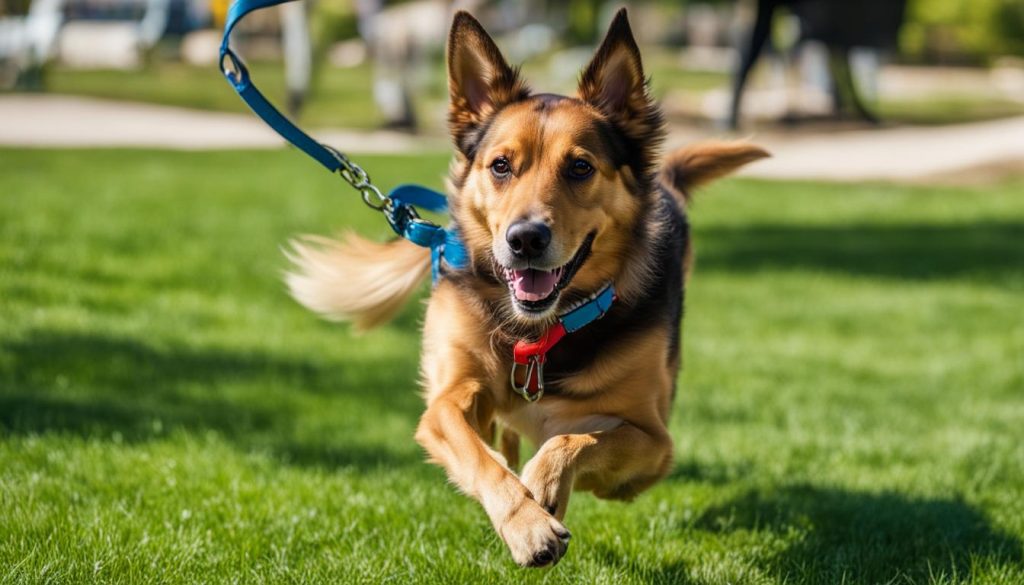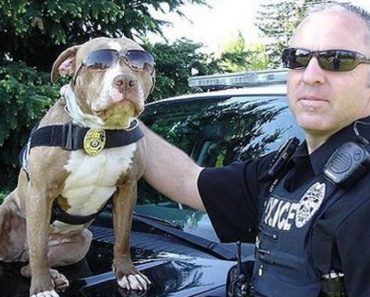As a dog owner, I understand the importance of keeping our furry friends safe and healthy. One bacterial disease that we need to be aware of is leptospirosis in dogs. Leptospirosis is caused by infection with Leptospira bacteria and can affect any mammal, including humans.
The bacteria thrive in warm and wet environments like damp grass, standing water, mud, and lakes. Dogs can contract leptospirosis through contact with the urine of infected animals or by consuming contaminated food, bedding, soil, or water. Carriers of the infection include raccoons, skunks, opossums, rats, cows, and pigs.
Early indicators of leptospirosis in dogs may include loss of appetite, changes in urine production, inactivity, vomiting, and diarrhea. It is crucial to address this disease promptly for the best chance of your dog’s survival.
Key Takeaways:
- Leptospirosis is a bacterial disease that can affect dogs and humans.
- Infected dogs usually contract leptospirosis through contact with the urine of infected animals or contaminated environments.
- Vaccination is the most effective method for preventing leptospirosis in dogs.
- Prompt diagnosis and treatment are crucial for the dog’s survival.
- Leptospirosis can be transmitted to humans, so caution should be taken if your dog is infected.
Leptospirosis Transmission and Risk Factors
Leptospirosis, a bacterial disease, can be transmitted to dogs through various means. Dogs can become infected by coming into contact with the urine of infected animals, as well as contaminated food, bedding, soil, or water. Another common mode of transmission is through contact with another infected dog or being bitten by an infected animal. Raccoons, skunks, opossums, rats, cows, and pigs are carriers of the leptospirosis infection.
One of the reasons why dogs are susceptible to leptospirosis is because the bacteria can be found in a broad range of carrier species. Regardless of where dogs live, they can be at risk of contracting the disease. However, certain factors can increase their vulnerability. Dogs that have exposure to slow-moving or stagnant water sources, roam in rural areas, come into contact with wild animals or farm animals, or interact with other dogs in urban areas or dog parks are at a higher risk.
To better understand the transmission and risk factors associated with leptospirosis, let’s take a closer look at how it can affect dogs:
- Transmission through contact with infected animals or contaminated environments, including urine, food, bedding, soil, or water.
- Transmission through contact with another infected dog or a bite from an infected animal.
- Raccoons, skunks, opossums, rats, cows, and pigs are carriers of leptospirosis.
- Dogs are susceptible to leptospirosis due to the broad range of carrier species.
- Dogs at higher risk are those that have exposure to slow-moving or stagnant water sources, roam on rural properties, come into contact with wild animals or farm animals, or have contact with other dogs in urban areas or dog parks.
Being aware of these transmission routes and risk factors can help dog owners take the necessary preventive measures to protect their furry friends.
By understanding how leptospirosis is transmitted and the risk factors involved, we can take steps to minimize the chances of our dogs contracting this bacterial disease.
In the next section, we will explore the various prevention methods available to keep our dogs safe from leptospirosis.
Leptospirosis Prevention in Dogs
Vaccination is the best way to prevent leptospirosis in dogs. The current four-way, second-generation vaccine protects against four types of leptospirosis and has fewer reactions in vaccinated dogs than previous versions.
There are multiple vaccine options and vaccination schedules available, so it’s important to discuss with your veterinarian to determine the most appropriate option for your dog.
Limiting your dog’s exposure to the outdoors is not practical or desirable for most dogs. Vaccination has significantly reduced the incidence of canine leptospirosis, and increasing the number of vaccinated dogs can further reduce the spread of the disease.

To ensure the health and well-being of your furry companion, it’s important to stay proactive in leptospirosis prevention. Consult with your veterinarian to create a vaccination plan tailored to your dog’s needs. By taking this precaution, you can provide your dog with the best chance of avoiding leptospirosis and enjoying a happy, healthy life.
Diagnosing Leptospirosis in Dogs
If you suspect that your dog may have leptospirosis, it is crucial to contact your veterinarian for diagnosis and treatment. Leptospirosis is a serious bacterial disease that can have severe consequences for both dogs and humans. Early diagnosis plays a crucial role in ensuring timely treatment and supportive care, which can greatly increase the chances of your dog’s survival.
When you bring your dog to the veterinarian, they will conduct a thorough examination and assess your dog’s overall condition. To confirm the presence of leptospirosis, the veterinarian may order diagnostic tests, such as blood tests or urine analysis. These tests can detect the presence of specific antibodies or DNA fragments of the Leptospira bacteria in your dog’s system.
Additionally, it’s important to consider the potential risks to human health. Leptospirosis can be transmitted from infected dogs to humans through contact with infected urine or contaminated environments. If you or anyone in your family has had close contact with the infected dog, it is recommended to seek medical assessment to ensure early detection and treatment if necessary.
Remember, a prompt diagnosis and appropriate treatment are crucial for managing leptospirosis effectively and improving the prognosis for your dog’s recovery.
Leptospirosis Treatment for Dogs
Treatment for leptospirosis in dogs involves antibiotic therapy to eliminate the bacteria from the dog’s system. When diagnosed with leptospirosis, it is important to start treatment promptly to improve the chances of a successful outcome. Antibiotics are prescribed by a veterinarian based on the severity of the infection and the specific strain of Leptospira bacteria involved. The appropriate antibiotic regimen can help eradicate the bacteria and prevent complications.
In addition to antibiotics, supportive care measures are often necessary to manage the symptoms and complications associated with leptospirosis. Fluid therapy, which involves providing intravenous fluids, can help manage dehydration and maintain the dog’s electrolyte balance. This is especially important in cases where kidney or liver failure has occurred.
During the treatment period, it is crucial to monitor the dog’s kidney and liver function regularly. Blood tests can help assess the organ function and identify any potential complications. These tests may include complete blood count (CBC), blood chemistry panel, and urinalysis. The veterinarian will determine the frequency of monitoring based on the dog’s condition and response to treatment.
Conclusion
Leptospirosis is a serious bacterial disease that can affect dogs, humans, and various other mammals. It is crucial for dog owners to understand the risk factors and take preventive measures to protect their pets from this potentially deadly infection.
The transmission of leptospirosis occurs through contact with infected animals or contaminated environments. Dogs can become infected by coming into contact with the urine of infected animals, consuming contaminated food or water, or through contact with other infected dogs. It’s important to be aware of these modes of transmission to minimize the risk of exposure.
Vaccination is the most effective method of preventing leptospirosis in dogs. Working with a veterinarian, dog owners can choose the appropriate vaccine and vaccination schedule for their pets. Prompt diagnosis and treatment are crucial for infected dogs, as early intervention improves the chances of survival. If you suspect your dog may have leptospirosis, always consult with a veterinarian for diagnosis and guidance on vaccination and preventive measures.
By taking proactive steps to protect our four-legged companions, we can help minimize the impact of leptospirosis and keep our dogs healthy and safe. Remember, the health and well-being of your dog are in your hands.
FAQ
What is leptospirosis?
Leptospirosis is a bacterial disease caused by infection with Leptospira bacteria. It can affect any mammal, including dogs and humans.
How is leptospirosis transmitted to dogs?
Dogs can become infected with leptospirosis through contact with the urine of infected animals or by consuming contaminated food, bedding, soil, or water. Infected dogs can also transmit the disease to other dogs.
What are the common symptoms of leptospirosis in dogs?
Common early indicators of leptospirosis in dogs include loss of appetite, changes in urine production, inactivity, vomiting, and diarrhea.
How can leptospirosis in dogs be prevented?
Vaccination is the best way to prevent leptospirosis in dogs. The four-way, second-generation vaccine is the most effective. It’s important to discuss with your veterinarian to determine the most appropriate option for your dog.
How is leptospirosis diagnosed in dogs?
If you suspect that your dog may have leptospirosis, it is crucial to contact your veterinarian for diagnosis. They may order diagnostic tests to confirm the presence of leptospirosis.
What is the treatment for leptospirosis in dogs?
Treatment for leptospirosis in dogs involves antibiotic therapy to eliminate the bacteria from the dog’s system. Supportive care measures, such as fluid therapy, may also be necessary.






